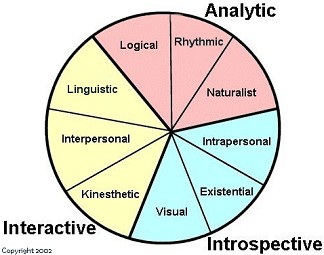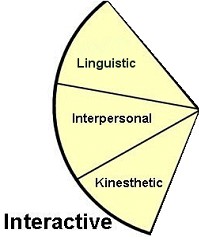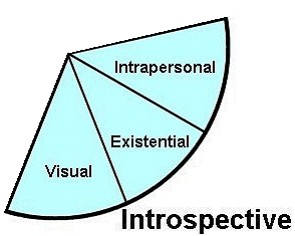Teaching English at University Level: How to Make It a Memorable Experience when Reading Comprehension and Grammar Instruction Prevail
Georgina Hudson, Argentina
Georgina Hudson has specialized in teaching ESP to adults for 14 years now. She runs a consulting firm which provides companies with English lessons. She’s become a blog writer for the BBC & British Council. She also writes about personal and professional growth in her facebook account: Georgina Hudson G. Current interest involves NLP.
E-mail: hudsongeorgina@gmail.com
Menu
Introduction
Background
Examples
Conclusions
References
In this article I would like to explore the options open to language teachers at university level.
At this level, English is often the object of observation, reflection and comparison with the mother tongue. Consequently, production activities like listening and responding to an audio, creative writing and speaking are usually overlooked.
We are going to explore different ways to foster motivation and interest in the university English classes, where reading comprehension and language analysis prevail.
At Universities, EFL teachers are frequently asked to teach English through reading comprehension and grammar instruction. Students in turn, are expected to develop a glossary, in connection with their courses, and to observe how the target language operates in a reading context.
Foreign language acquisition at university is then, a means to provide students with the necessary tools to approach a text on their own when they start their careers. These tools can also enable future professionals to write a simple abstract if they happen to conduct a piece of research.
Universities understand that critical reading is essential to success in our societies. The ability to read is crucial for personal and professional development in life. The most important role for teachers of a foreign language at some universities is to aid students to be effective and strategic readers.
The challenge teachers are faced with lies on how to deliver meaningful classes where students’ individual styles are as respected as much as universities’ syllabi.
We usually associate reading comprehension with more passive learning skills. My question is therefore, how to motivate learners to take an active role even if reading and grammar are prevailing in the English class syllabus.
Reading can be an excelent way to i. have fun, ii. to learn about a topic, iii. to promote interaction between the reader and the text and the reader and other readers and iv.to acquire some insights into the target language and culture. We are going to have a look at varying ways to engage learners in their university English classes, where instruction is basically based on reading comprehension and grammar analysis.
If our concern at university level is to “humanize” the English classes so that everyone in the classroom feels involved and addressed, taking into account the theories of purpose reading, the top-down and bottom-up approaches to comprehending a text and the theory of Multiple Intelligences may help us achieve our goals when planning what to do in the classroom.
Whenever we read we read for a purpose. In real life, people choose to read written discourse by themselves. However, in the classroom teachers usually assign texts to their students. It is crucial to keep in mind that our purpose for reading should complement our students’ courses and their varying interests and motivation.
How can we learn about our learners’ intrinsic motivations to enable ourselves to choose reading materials more mindfully? I think the first step is to try to be on our students’ wavelength to validate their feelings and to gain their trust. I feel that taking a step back and observing the different individuals in the class may pave the way for getting some insights into their learning styles and strategies, the interests in their courses and their goals in life.
I would now like to question whether choosing the appropriate reading materials will guarantee that the learning process is effective and/or engaging. Gardner believes that “Effective teachers intuitively know that students’ attitudes and academic achievement are improved when learning experiences revolve around the interests, talents and needs of students” (Gardner, 1993, p.12) It is the university language teacher’s responsibility to design activities which foster the use of reading comprehension strategies that meet the students’ different learning skills and needs in the classroom.
In order to cater for different students’ needs, an integrative approach to reading seems to effectively help our learners develop their reading abilities. Theories of reading have changed and evolved over the years. While they may all have something useful to offer, I feel that it is positive to revise the different options available to us and see how they may interact in a class.
The top-down approach to reading proposed by Kenneth Goodman (1967) sees reading as a guessing game, a process in which readers sample the text, make hypotheses, confirm or reject them, make new hypotheses, etc. The bottom-up approach, in contrast, views reading as basically a matter of decoding a series of written symbols into their aural equivalents in the quest for making sense of the text, Nunan (1991).
Both approaches seem to be feasible when exploiting reading materials at university level. University learners bring to the classroom a wide range of cognitive skills and strategies which help them learn and work out the meaning of a text. However, I think that some understanding of linguistic units is also necessary to process discourse. “We have ceased debating whether reading is a bottom-up, language-based process or a top-down, knowledge based process. Most people understand now that the two processes interact” Ellen L Block (1992)
I would like to consider later on in this article an example of how reading comprehension theories may blend to enhance the learning process. It is also important to define how to improve our classes to create a more pleasant and significant learning environment. While we receive information through our five senses, individuals view reality from different perspectives, some people are mostly visual, auditory, kinaesthetic and so on and so forth.
Identifying students' preferred learning styles may help us communicate effectively with them. Gardner’s theory of Multiple Intelligences (1993) proposes different and autonomous intelligence capacities that result in many different ways of knowing, understanding, and learning about the world to have a better understanding of it. Thus far, Gardner has identified nine intelligences. Below, there is a clear summary of all nine (MacKenzie 2002):
VISUAL/SPATIAL - people who learn best visually and organizing things spatially. They like to see what you are talking about in order to understand. They enjoy charts, graphs, maps, tables, illustrations, art,etc.
VERBAL/LINGUISTIC - people who demonstrate strength in the language skills: speaking, writing, reading, listening.
MATHEMATICAL/LOGICAL - people who display an aptitude for numbers, reasoning and problem solving.
BODILY/KINESTHETIC - people who experience learning best through activity: games, movement, hands-on tasks, building.
MUSICAL/RHYTHMIC - people who learn well through songs, patterns, rhythms, instruments and musical expression.
INTRAPERSONAL - people who are in touch with their own feelings, values and ideas.
INTERPERSONAL - people who are noticeably people oriented and outgoing, and do their learning cooperatively in groups or with a partner.
NATURALIST - people who love the outdoors, animals, field trips. These students love to pick up on subtle differences in meanings.
EXISTENTIAL - people who learn in the context of where humankind stands in the "big picture" of existence. They ask "Why are we here?" and "What is our role in the world?"
According to Gardner’s model (1999) these nine intelligences most often interact in the brain. People are not necessarily 100% visual or kinaesthetic, etc., but they are likely to display different intelligences in varying amounts. An awareness of different approaches, as Gardner pointed out, may improve learning.
Teachers can plan lessons and units which effectively address the different “intelligences” in the classroom (McKenzie, 2002). Figure 1.1 presents the three Multiple Intelligences domains.
Figure 1.1. Multiple Intelligences Domains

According to McKenzie (2002), the analytic domain consists of the logical, musical and
naturalist intelligences. These are the intelligences that promote analysis of knowledge that is
presented to the learner. These three intelligences are considered analytic because they
promote the processes of analyzing and incorporating data into existing schema, even though
they may have other components.

McKenzie (2002) indicates that the interactive domain model consists of the linguistic,
interpersonal and kinesthetic intelligences. These are the intelligences that learners typically
employ to express themselves and explore their environment and invite and encourage interaction to achieve understanding. Even if a student completes a task individually, s/he must consider others through the way s/he writes, creates, constructs and makes conclusion. The interactive intelligences are by their nature social processes.

The introspective domain consists of existential, intrapersonal, and visual intelligences.
These are the intelligences that have a distinctly affective component to them. These
intelligences are characterized as introspective because they require a looking inward by the
learner, an emotive connection to their own experiences and beliefs in order to make sense of
new learning. The introspective intelligences are by their nature affective processes (McKenzie, 2002).

Take for example a class which is completing their degree in Literature. Watch your students. How do they behave and respond to stimuli? Be aware of their different learning styles. Talk to them, ask them what they like about the literature they read on the course and also in their personal lives. Try to find an authentic article from the news, for example, related to their field of interest. The culture section may provide you with plenty of materials to exploit in class while teaching at the Literature college.
When thinking about how to deal with your news article, leave the original as it is. The printable versions are great to save ink and paper space but you may deprive your visual students of invaluable visual aids. So leave the graphs, pictures, photographs, font size and style and colours (if possible).
Prepare hand-outs or write instructions on the whiteboard and be ready to read them aloud or ask your students to do that for the rest of the class. In this case, you are giving the visual students the chance to read, your auditory students the chance to listen, and your kinaesthetic students the chance to touch the hand-outs/write your instructions on the board.
For an article that appeared in the news about the book “Animal Farm”, for instance, you may want to follow these simple steps at different stages:
Before reading the article:
- Ask your students if they have heard about G. Orwell and his most famous works (interactive domain).
- Make predictions about the source of the text based on the contextual clues. You may even give them options. (interactive, introspective, analytical domains)
- Have a look at the date, author, topic and guess what part of the publication the article was published (culture section) (interactive, introspective, analytical domains).
- Ask about their reactions to the title and the photograph illustrating the text (interactive, introspective, analytical domains)
During reading tips:
- Read quickly/skim the article to discuss about the function of the text. You may give students some options. (interactive, introspective, analytical domains)
- Skim the article to summarize the main ideas in it and in every paragraph (interactive, instrospective, analytical domains)
- Differentiate principal from secondary ideas in every paragraph (interactive, introspective, analytical domains)
- Read in more detail/scan the text to look for references – pronouns, synonyms, the use of definite and indefinite articles, etc, in the piece of discourse. (interactive, introspective, analytical domains)
- Scan the text to answer multiple choice or true or false questions about details in the text.( interactive, introspective, analytical domains)
- Scan the text to make selections of linguistic items which are recurrent or which you may want your students to pay attention to, for example suffixes, prefixes, tenses, etc (interactive, introspective, analytical domains)
- Help students work out the language rules by themselves in pairs and/or in groups, draw charts, timelines, graphs with the conclusions (interactive, introspective, analytical domains)
- Practice language rules in such a way that all your students feel engaged. For example: if you’re practising “wish” you may play “Aladdin’s lamp”. Students write down three real life wishes “I wish I had passed the Philosophy exam” “I wish I were slimmer”. Read out the wishes.Your learners guess who wrote every wish. (interactive, introspective, analytical domains)
- Assign some tasks to do at home. Make them fun. (introspective, analytical domains)
- Read and paraphrase to verify what was comprehended. (interactive, introspective, analytical domains)
After reading the article:
- Ask students to discuss the text - written and oral to share with the class. (interactive, introspective, analytical domains)
- Invite students to summarize – written and oral to share with the class (interactive, introspective, analytical domains)
- Ask students to think about the article from different perspectives – in our example it could “Orwell’s”, “today’s audiences’”, “political sectors’”, etc. (interactive, introspective, analytical domains)
- Ask students to listen to or read about other related materials and take notes about them to share with the class (interactive, introspective, analytical domains)
- Invite students to write a letter to the editor in response to the article/to write a blog sharing their feelings about the article. (interactive, introspective, analytical domains)
- Discuss about the feelings aroused by the article and write a few lines about them to share with the class (interactive, introspective, analytical domains)
- Organize a role-playing activity. Give students different roles, in our example it could be “Orwellians” and “totalitarian thinkers”. Allow students time to write down ideas and prepare to act out their roles. (interactive, introspective, analytical domains)
While the amount of teaching planning time may prove to be greater in a student-centred class than in a more traditional one, I feel it is well worth trying out this “multi-learning” style approach which can creative the conditions for our students to become independent thinkers questioning what they read throughout the process of understanding a text. It is also invaluable work to engage our students in the class.
The students will acquire reading strategies through the interaction of activities aimed to respect their diferent abilities. Multiple intelligencies in reading will “enrich our teaching by systematically activating other intelligences in our language lessons and demonstrating what we can do so that more students feel addressed in our class” (Puchta and Rinvolucri, 2008).
The use of an integrative approach to reading will provide learners with a variety of activities which will allow them to be motivated and focused while learning the complicated reading process of understanding a piece of discourse and increasing their level of performance at reading purposefully.
Gardner, H. (1993), Frames of mind: The theory of Multiple Intelligences.
Ausubel, D. (1959). Viewpoints from related disciplines: Human growth and development.
Goodman, K. (1967): Reading: A psychological guessing game. Journal of the Reading Specialist.
Block, E. L. (1992). See how they read: comprehension monitoring of L1 and L2 readers. TESOL Quarterly 26(2)
McKenzie, W. (2002). Multiple intelligences and instructional technology: A manual for very mind.
Gardner, H. (1999). Intelligence reframed.
Puchta, H. and Rinvolucri, M (2008), Multiple Intelligences in EFL.
Barnett, M. A. (1988). Teaching reading in a foreign language
Duke, N. K., and Pearson, D. P. (n.d.). Effective practices for developing reading comprehension. Available at http://effectivereading.com/
Nunan, D. (1991). Language Teaching Methodology.
Garner, R. (1987): Metacognition and reading comprehension.
Nuttall, Ch. (1996): Teaching reading skills in a foreign language.
Stott, N. (2001): Helping ESL students become better readers: Schema theory applications and limitations. The internet TESL Journal, vol. VII, No.11,
http://iteslj.org./Articles/Stott-Schema.html (accessed on December 29, 2006).



|